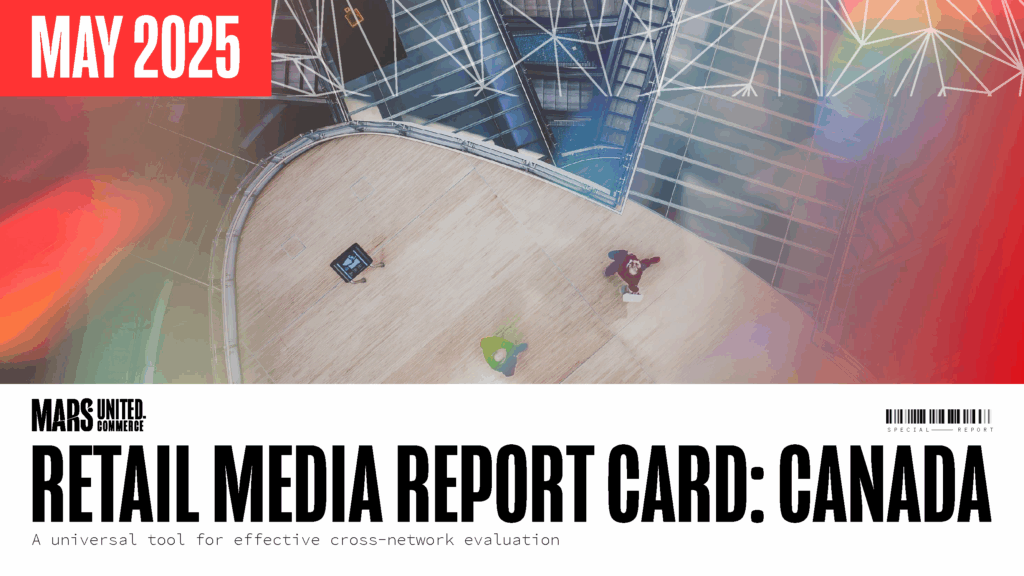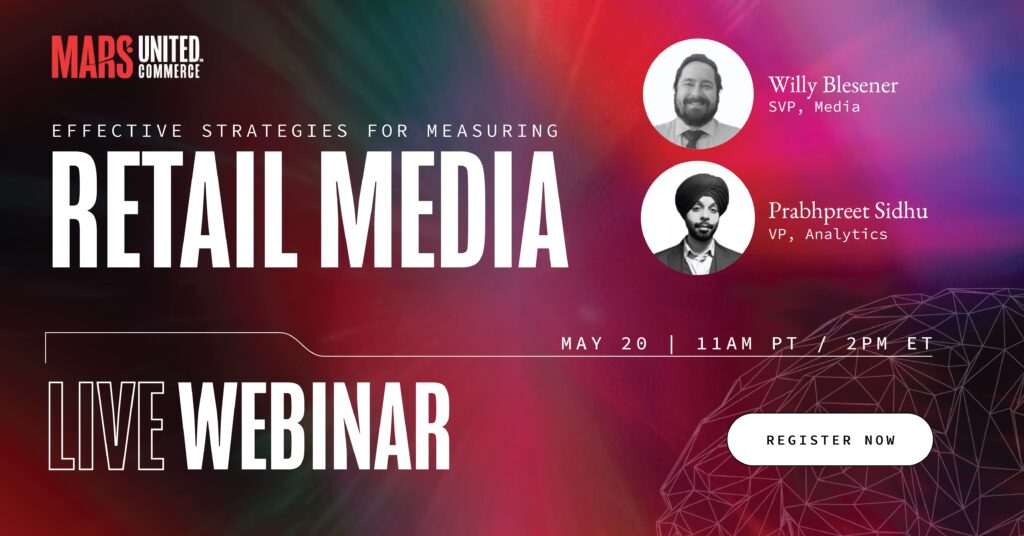The key to network success is close alignment with the people who command both the store and the broader brand investment.
By Michele Roney, Mars UnitedSM Commerce
As retail media continues growing in size and significance for CPG marketing strategy, one critical discussion being held at nearly every organization is the need to adopt a more holistic approach to planning and activation that incorporates the retailer’s entire ecosystem.
CPG brands want to optimize their media investments by aligning campaigns with the in-store, trade, and ecommerce activities they’re also conducting with the retailer — and maybe even secure some value-added assets along the way. Increasingly, retail media networks want to help their brand advertisers gain this optimization so that their media campaigns will deliver the best possible results. It’s one reason that nearly all networks will be busy throughout 2025 bringing new media opportunities into the store environment.
 But achieving that alignment has been difficult for many reasons, among them internal siloes, conflicting objectives and incentives, and general resistance to change. And that’s largely because, until now, the most important stakeholder for gaining alignment has been left out of the retail media loop: the merchant.
But achieving that alignment has been difficult for many reasons, among them internal siloes, conflicting objectives and incentives, and general resistance to change. And that’s largely because, until now, the most important stakeholder for gaining alignment has been left out of the retail media loop: the merchant.
Despite all the attention given to retail media in the last few years, the merchant still controls the brand relationship and is the gatekeeper to in-store merchandising. What’s more, while there might be some CPG companies spending incremental dollars or reallocating brand funding to support retail media, most are shifting money from budgets that fall within the merchant’s domain. And that’s not something they’re happy about.
Given those facts, it’s only a slight exaggeration to say that it’s nearly impossible for retail media network to build long-term success without gaining the active support and involvement of the merchant organization.
The role of retail media
There is a longstanding axiom in retail that says: The merchant’s job is to put the product on the shelf and the brand’s job is to generate demand. In that context, retail media’s job is to support the merchant’s role by giving brands the most effective ways to fulfill theirs. Yet it’s still far too common for there to be little communication between retail media and merchandising within the retail organization. That creates a major roadblock to success.
 Retail media should be following the merchant’s lead rather than trying to overtly influence it — or circumvent it entirely by blindly selling media that might conflict with the merchandising plan. If the right product isn’t on the shelf, in the right amounts, it doesn’t matter how many shoppers see the media — or might even be inspired to make a purchase. You can’t sell what isn’t there.
Retail media should be following the merchant’s lead rather than trying to overtly influence it — or circumvent it entirely by blindly selling media that might conflict with the merchandising plan. If the right product isn’t on the shelf, in the right amounts, it doesn’t matter how many shoppers see the media — or might even be inspired to make a purchase. You can’t sell what isn’t there.
Similarly, brands shouldn’t be plotting to use their retail media investment as a bargaining chip to secure better shelf position or incremental merchandising — or to expect the network to petition on their behalf. Those conversations need to happen simultaneously, or in reverse order — so the retail media buy can be used to drive demand for the product that will be on the shelf.
Conversely, merchants need to be aware of the media schedule to make sure they have a replenishment plan ready. This is particularly important in ecommerce where fulfillment will often pull from store-level inventory — where the potential for out of stocks is greater than it is at a fulfillment center.
When working with our network clients, Mars United pays close attention to the products on promotion (especially incremental display) to identify where brand advertisers can amplify that merchant activity to drive demand — rather than working against their efforts by promoting a competing product. We don’t plan any media campaigns unless the merchant is at least informed — if not actively involved. We also ask the merchants to keep us informed about the brands they’re speaking with about promotions with so we can coordinate our sales efforts. That level of collaboration is necessary to optimize retail media for all three parties.
Education is the answer
Education is crucial. Most networks don’t spend enough time helping merchants understand the importance of retail media for the organization and how it can be used to help achieve their own objectives. And they don’t devote the resources needed to continue building on that education as the network grows and becomes more complex.
 Some of the largest U.S. networks have staff dedicated to educating the merchants, creating sales materials and case studies to share in road shows and conducting weekly meetings to evangelize new opportunities. Ideally, network sales teams would have category-specific subject matter experts who can work directly and consistently with merchant partners (assuming the business is performing well enough to support those resources). Collaboration is a lot easier if both teams speak the same language.
Some of the largest U.S. networks have staff dedicated to educating the merchants, creating sales materials and case studies to share in road shows and conducting weekly meetings to evangelize new opportunities. Ideally, network sales teams would have category-specific subject matter experts who can work directly and consistently with merchant partners (assuming the business is performing well enough to support those resources). Collaboration is a lot easier if both teams speak the same language.
For their part, merchants should consistently communicate their strategic goals and initiatives to the retail media team well enough in advance to inform sales plans. Many retailers already require merchants to do this for the entire organization; holistically speaking, other internal players such as marketing, social, and ecommerce need to be aligned as well.
Ultimately, the goal is to build retail media into the bigger picture. Forward-thinking networks have started bringing their marketing and merchandising colleagues to the table to have more complete joint business planning discussions with brand partners. Ahold Delhaize USA’s retail media, loyalty, and shopper enterprise departments meet weekly to review new item launches, innovation, and digital campaigns. Albertsons Media Collective works to coordinate media campaigns with merchandising opportunities during in-store seasonal events. Hy-Vee recently added retail media into JBPs for its top 40 brand partners; Meijer is doing that even more broadly.
The benefits are easy for everyone to understand: consistently better media campaigns that drive demand and conversion, producing results that deliver on the objectives of all parties — category growth for the merchant, incremental sales for the brand, revenue gains for the network, and the return on ad spend that everyone wants.
And by doing that, you’ll also be giving your shoppers seamless, 360-degree experiences that will drive stronger engagement and loyalty — and make your retail media even more attractive for brands.
About the Author

As EVP at Mars United Commerce, Michele Roney leads the Retailer CX business, which helps retailers drive growth through marketing, customer experience design, and the creation, operationalization, and monetization of retail media networks. A 32-year company veteran with experience across retail marketing, media and promotion, she has led the ground-up development, management and support of leading networks both in the U.S. and Canada.



